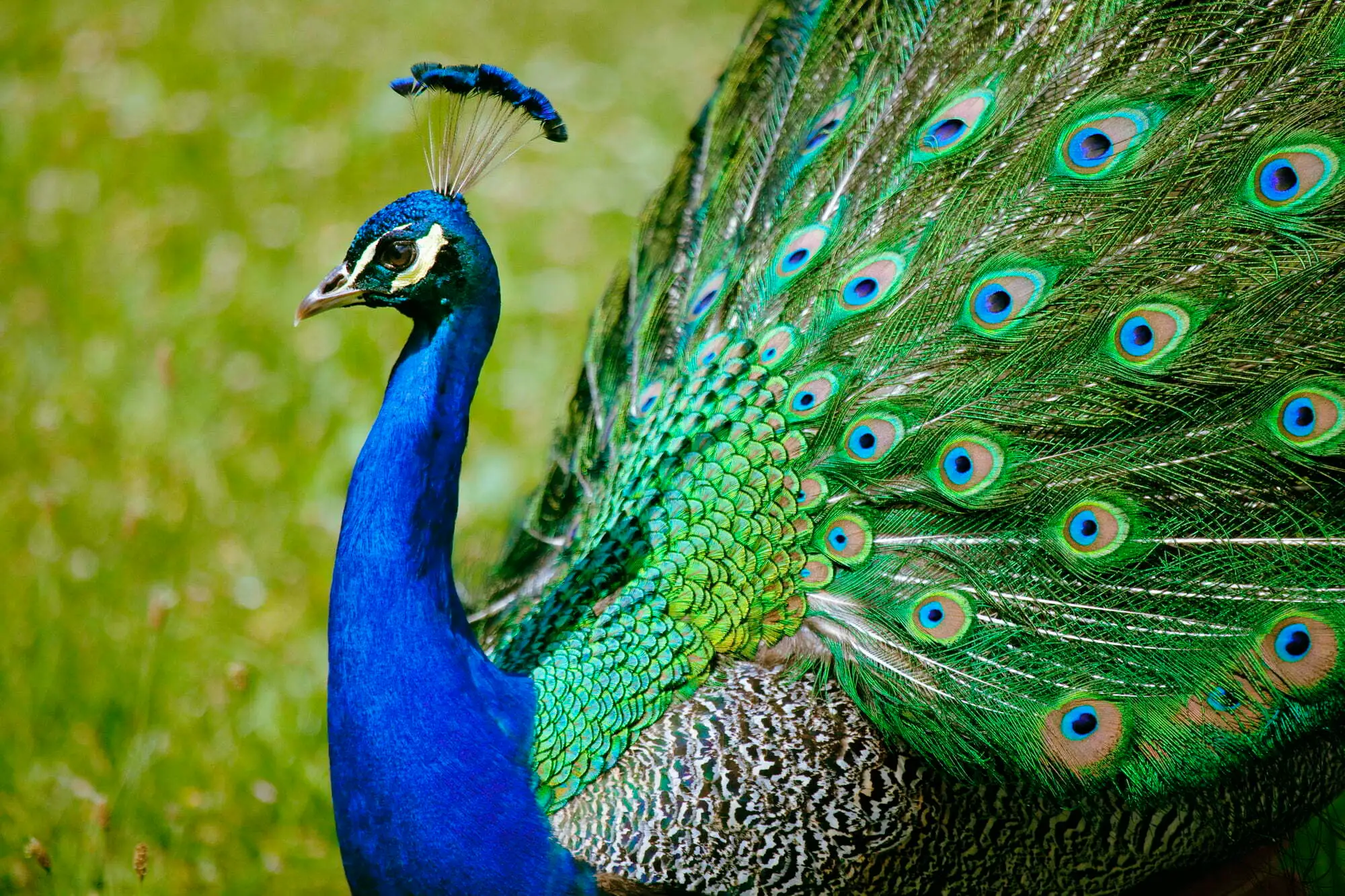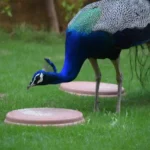Prepare to be amazed as we embark on a fascinating journey into the world of peacocks! These stunning birds, adorned with their vibrant plumage and graceful moves, have long captivated our hearts. Join us as we uncover the secrets of their longevity, exploring the factors that shape their lifespans in both the wild and under human care. Get ready to delve into the incredible resilience and adaptability of these avian marvels!
How Old Do Peacocks Live?
Peacocks, with their dazzling feathers and mesmerizing courtship rituals, have captivated us for ages. But have you ever wondered just how long these magnificent creatures grace us with their presence? Let’s dive into the world of peacocks and uncover the secrets of their lifespan.
Life on the Edge: Peacocks in the Wild
Life in the wild is a constant struggle for survival, and peacocks are no exception. Facing threats from predators, habitat loss, and competition for resources, these birds have to be tough to make it. On average, a peacock navigating the wilds can expect to live for about 10 to 15 years. Sadly, green peacocks, a specific type of peacock facing intense pressure from hunting and habitat destruction, often have even shorter lifespans. It’s a stark reminder of the challenges many creatures face in their natural environments.
A Life of Leisure: Peacocks in Captivity
Now, imagine a peacock living a life of luxury. With humans providing food, shelter, and protection from predators, it’s no surprise that peacocks living in captivity can enjoy much longer lives. Think about it – regular meals, a cozy place to rest, and even occasional vet visits! It’s like a five-star resort for birds! Thanks to this pampered lifestyle, captive peacocks can live for an impressive 50 years! That’s longer than many household pets!
What Influences a Peacock’s Lifespan?
Just like with humans, a peacock’s lifespan isn’t solely determined by where it lives. Several factors play a role:
| Factor | Description |
|---|---|
| Captivity/Wild | Living in the wild exposes peacocks to greater risks, impacting their lifespan compared to their captive counterparts. |
| Species | Green peacocks, facing unique environmental challenges, generally have shorter lifespans than their Indian Peacock relatives. |
| Health | Peacocks receiving regular veterinary care and a balanced diet tend to live longer, highlighting the importance of good health practices. |
| Genetics | Just like some families seem to have a knack for longevity, genetics can influence how long a peacock lives. |
Fun Facts About Our Feathered Friends
- Feathery Fashion Statement: Those iconic long tail feathers that male peacocks are famous for? They don’t get them until around two years old. Talk about a late bloomer!
- Ready for Adulthood: Both male and female peacocks reach full maturity at three years old, ready to take on the world, or at least the challenges of finding a mate and raising a family.
- Early Challenges: Sadly, even with the potential to live long lives, peacocks have a tough time in their first year. Many don’t make it, highlighting the vulnerability of young animals.
Peacocks, with their beauty and resilience, remind us of the wonders of the natural world. Understanding their lifespans helps us appreciate these creatures even more and encourages us to protect them and their habitats. After all, who wouldn’t want to share the planet with these dazzling birds for generations to come?
Want to know if peacocks are really edible? Click here to learn more about the dietary habits of this fascinating bird.
Curious if peacocks are snake predators? Check this to see if their diet includes slithering reptiles.
Looking for information on how peacocks interact with humans? Click here to find out if these colorful birds can be friendly companions.
Want to know the collective noun for a group of peacocks? Click here to discover this unique group name.
What Factors Influence a Peacock’s Lifespan?
We all know peacocks for their dazzling feathers and those mesmerizing courtship displays—they’re truly captivating creatures! But have you ever wondered about how long these beautiful birds actually live? It turns out their lifespan can vary quite a bit depending on where they spend their lives: in the wild or under human care. Let’s dive into the factors that affect how long a peacock can strut its stuff!
Out in the wild, peacocks face a whole range of challenges that can impact their lifespan. Think of it like this: their survival depends on finding a good neighborhood with plenty of food, water, and safe places to rest. If they hit the jackpot with a resource-rich environment, they’re likely to live longer than those struggling to make ends meet in a less hospitable area. Predators also play a huge role in a wild peacock’s life expectancy. Imagine young peacocks constantly on edge, vulnerable to threats from snakes, foxes, and even birds of prey. This constant pressure from predators can really limit their chances of reaching old age.
Now, compare that to life in captivity, where peacocks are treated like royalty! They have a steady supply of food and water, a safe haven from predators, and regular check-ups from avian vets—it’s like living the good life! This difference in lifestyle translates to a significant gap in lifespan. Captive peacocks, free from the worries of the wild, can enjoy up to 50 years, while their wild counterparts typically live between 10-25 years. That’s a pretty big difference!
But it’s not just the environment that matters; individual health and genetics play a role too. Think of it like us humans—some of us are blessed with robust immune systems and good genes that help us live longer, healthier lives. Similarly, peacocks with strong immune systems and no genetic predispositions to illness are more likely to live longer. Conversely, those dealing with chronic health conditions or genetic disorders may have a shorter lifespan.
Understanding what makes a difference in a peacock’s lifespan is key to protecting these magnificent birds. For captive peacocks, providing top-notch care ensures they live long, healthy lives. And for their wild counterparts? Well, that’s where habitat conservation and managing predator populations come in. By focusing on these efforts, we can help ensure these dazzling birds continue to grace our planet for generations to come.
At What Age Do Peacocks Reach Maturity?
We’ve talked about how stunning peacocks are, but did you know they grow up differently depending on if they’re boys or girls? It’s true! Male peacocks, the ones with those dazzling tail feathers, take their time to mature. They don’t hit their stride until around three years old. That’s when they’re finally ready to strut their stuff and attract a mate. Female peacocks, on the other hand, are a bit quicker to bloom. They become mature around two years old and can start families earlier than their male counterparts.
Now, just like us humans, peacocks can live longer if they’re well taken care of. Out in the wild, they face all sorts of dangers, from hungry predators to shrinking forests. It’s a tough life, and many don’t make it past twenty years. But in a safe and comfy environment – like a zoo or a sanctuary – they can really thrive. Think of it like having a cozy home, good food, and regular doctor’s appointments – who wouldn’t live longer with those perks?
Speaking of perks, let’s talk about those famous tail feathers. You can tell a young peacock from a mature one just by looking at their plumage. Those iconic “eyes” on the tail feathers? They don’t appear until the male peacock reaches maturity. And those impressive long tails? They take time to grow too!
Here’s a handy table summarizing the key differences:
| Feature | Male Peacock | Female Peacock |
|---|---|---|
| Sexual Maturity | Around 3 years old | Around 2 years old |
| Distinctive Feature | Develops long tail feathers with “eyes” | Develops less showy plumage |
So, the next time you see a peacock, take a moment to appreciate its journey to adulthood. It’s a reminder that good things take time, especially when it comes to growing those magnificent tail feathers!
How Does a Peacock’s Lifespan Compare to Other Birds?
Peacocks, those flamboyant show-offs of the bird world, are surprisingly long-lived. Imagine these dazzling creatures gracing gardens and parks for a couple of decades! While a wild peacock might strut its stuff for 10-15 years, their captive counterparts can enjoy a leisurely retirement, often reaching 20 years or more. It’s like the difference between facing the daily grind and winning the lottery – a life of luxury definitely agrees with them!
This longevity gap comes down to a few key factors. Think about it: in the wild, it’s a constant battle for survival. Predators lurk around every corner, diseases spread like wildfire, and finding a safe haven from the elements is a daily struggle. But in captivity? It’s all taken care of – a steady supply of delicious food, a cozy shelter from the storm, and a personal doctor on speed dial. No wonder they live longer!
Now, let’s compare them to their feathery brethren. Turns out, peacocks are up there with the avian senior citizens! Their lifespans rival those of parrots, macaws, and even hornbills, who are known for their impressive longevity. To put things in perspective, here’s a handy table:
| Bird Species | Average Lifespan in Wild | Average Lifespan in Captivity |
|---|---|---|
| Peacock | 10-15 years | 20+ years |
| Parrot | Varies greatly by species, can range from 10 to 80 years | Varies greatly by species, often exceeding wild lifespans |
| Macaw | 30-50 years | 50-80 years |
| Hornbill | 30-40 years | Up to 50 years |
| Robin | 1-2 years | Up to 10 years |
| Sparrow | 2-4 years | Up to 10 years |
As you can see, peacocks are far from being delicate flowers. And just like us humans, a male peacock’s lifespan is pretty much the same as a female’s. So whether they’re dazzling us with their iridescent plumage or simply enjoying a leisurely stroll, these magnificent birds are a testament to the benefits of a life well-lived.
FAQ
Q1: How long do peacocks live in the wild?
A1: Wild peacocks have a shorter lifespan than captive peacocks, typically ranging from 10 to 15 years. They face threats like habitat loss, predation, food shortages, poaching, and hunting.
Q2: How long do peacocks live in captivity?
A2: In captivity, peacocks can live up to 20 years or even longer with proper care. They are protected from the threats they face in the wild, such as predators and diseases.
Q3: What is the average lifespan of a peacock?
A3: The average lifespan of a peacock in the wild is estimated to be around 12 to 15 years. In captivity, peacocks can live for over 20 years.
Q4: What factors affect the lifespan of peacocks?
A4: Factors that affect the lifespan of peacocks include the quality of their habitat, the availability of food, predation risks, and their overall health.
Q5: What is the oldest recorded age of a peacock?
A5: It is difficult to determine the oldest recorded age of a peacock, as their lifespans are not well documented in the wild. However, there are reports of peacocks in captivity living for 40 or 50 years.
- Unlock Water’s Symbolism: A Cross-Cultural Exploration - April 20, 2025
- Identify Black and White Snakes: Venomous or Harmless? - April 20, 2025
- Unlocking Potential: Origins High School’s NYC Story - April 20, 2025















